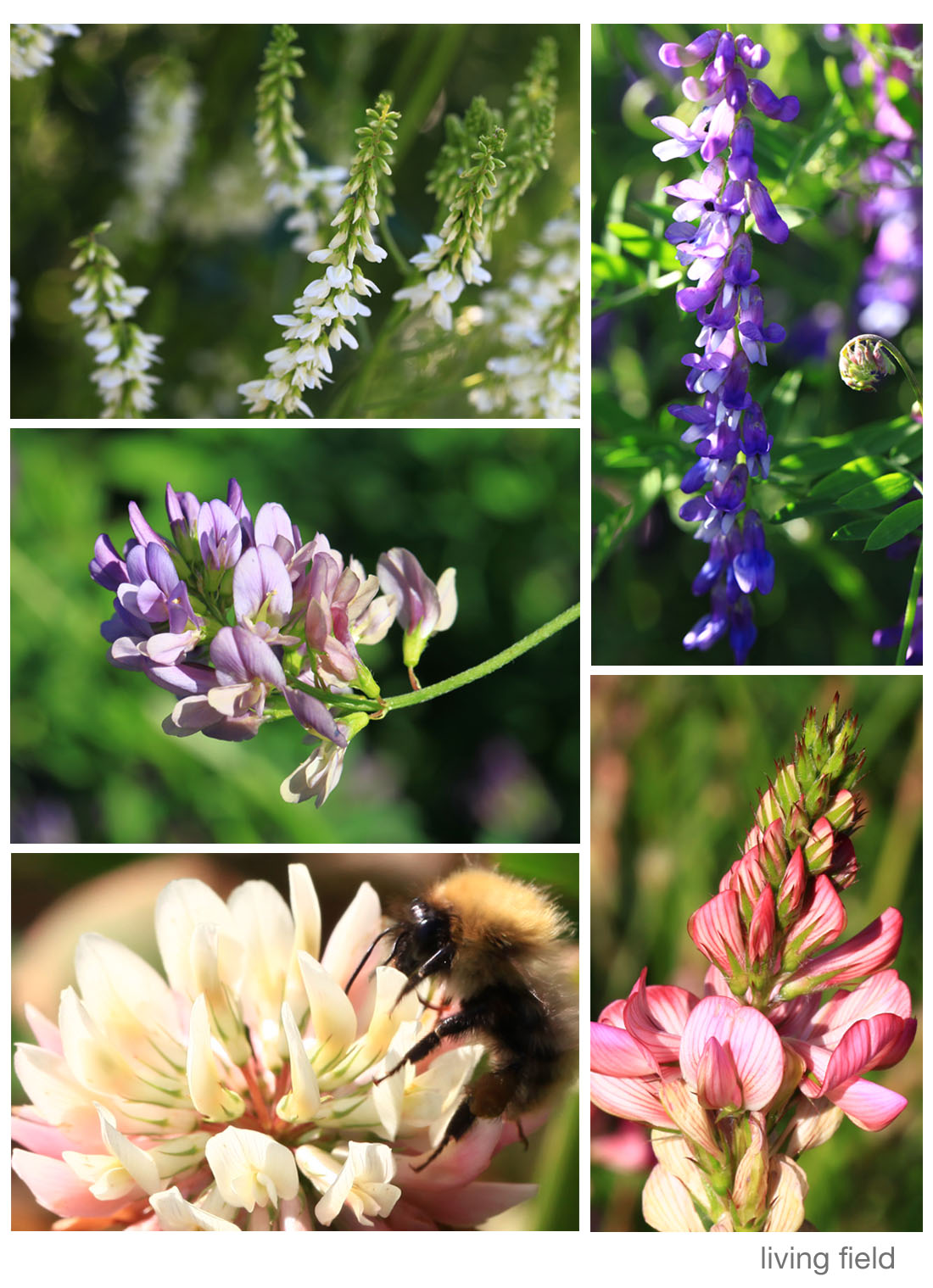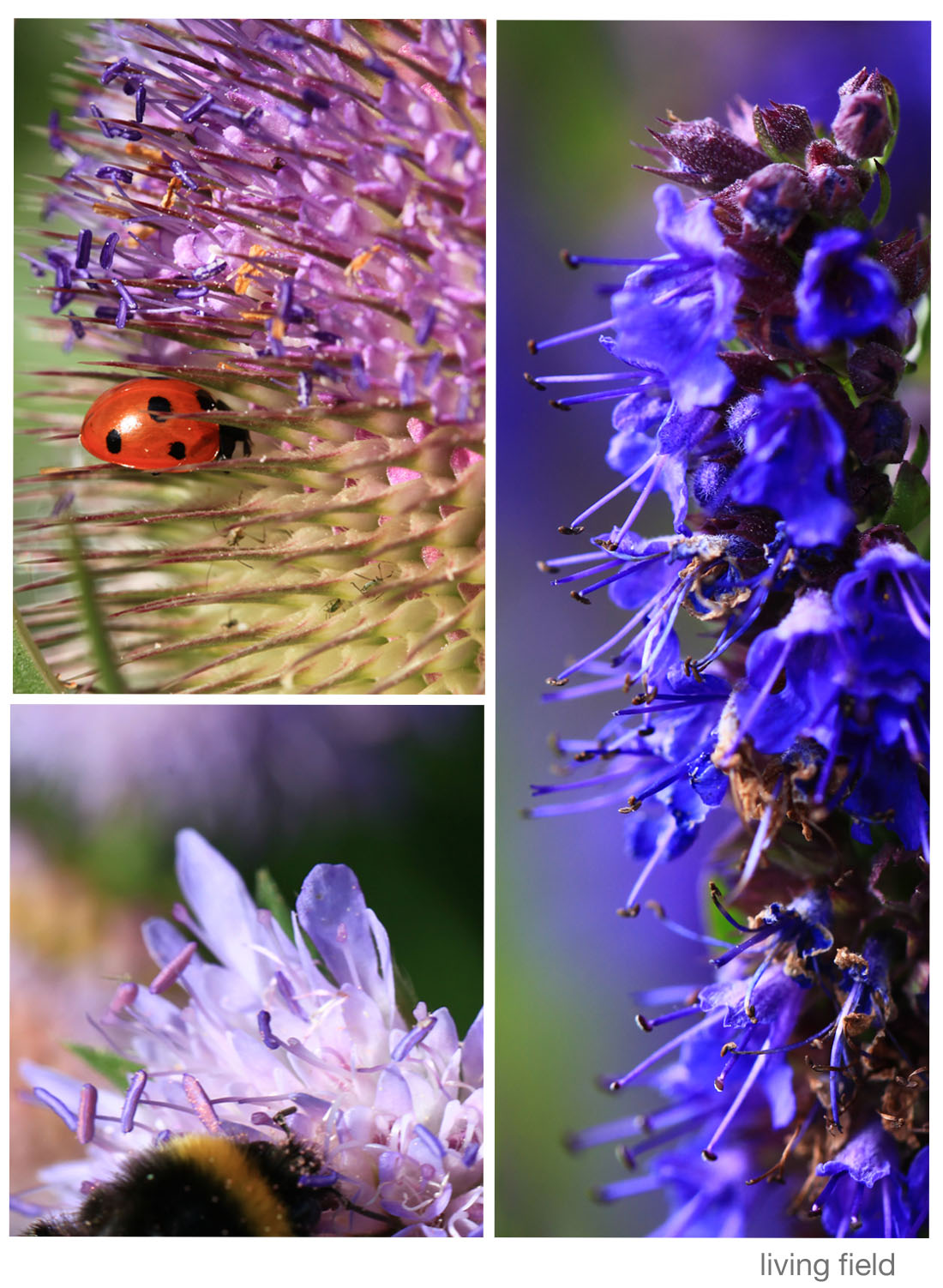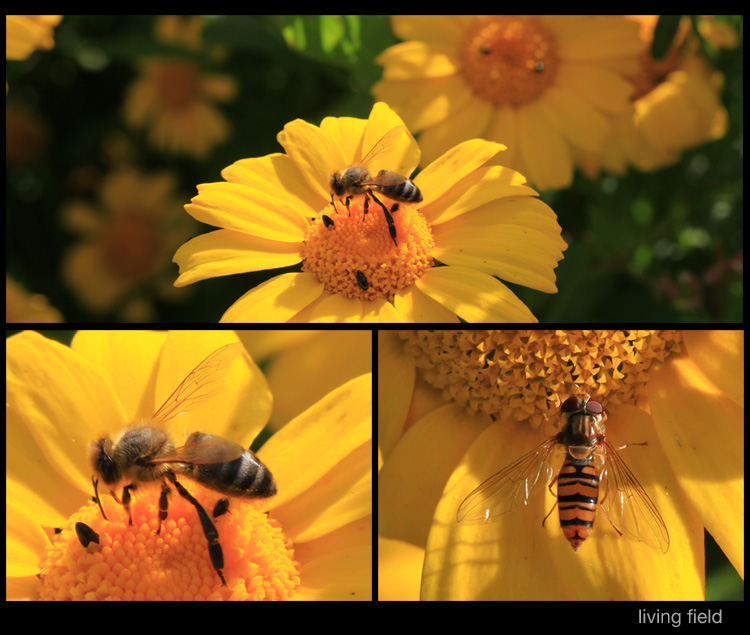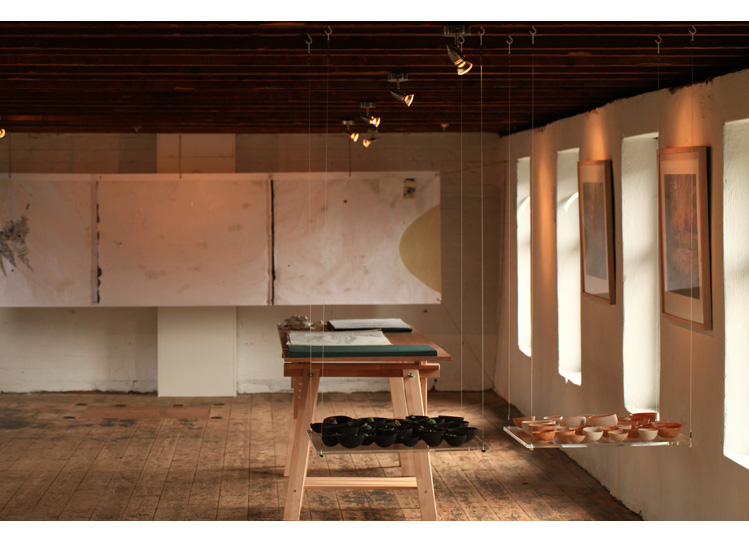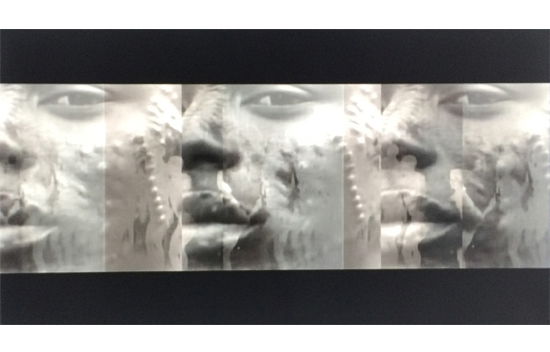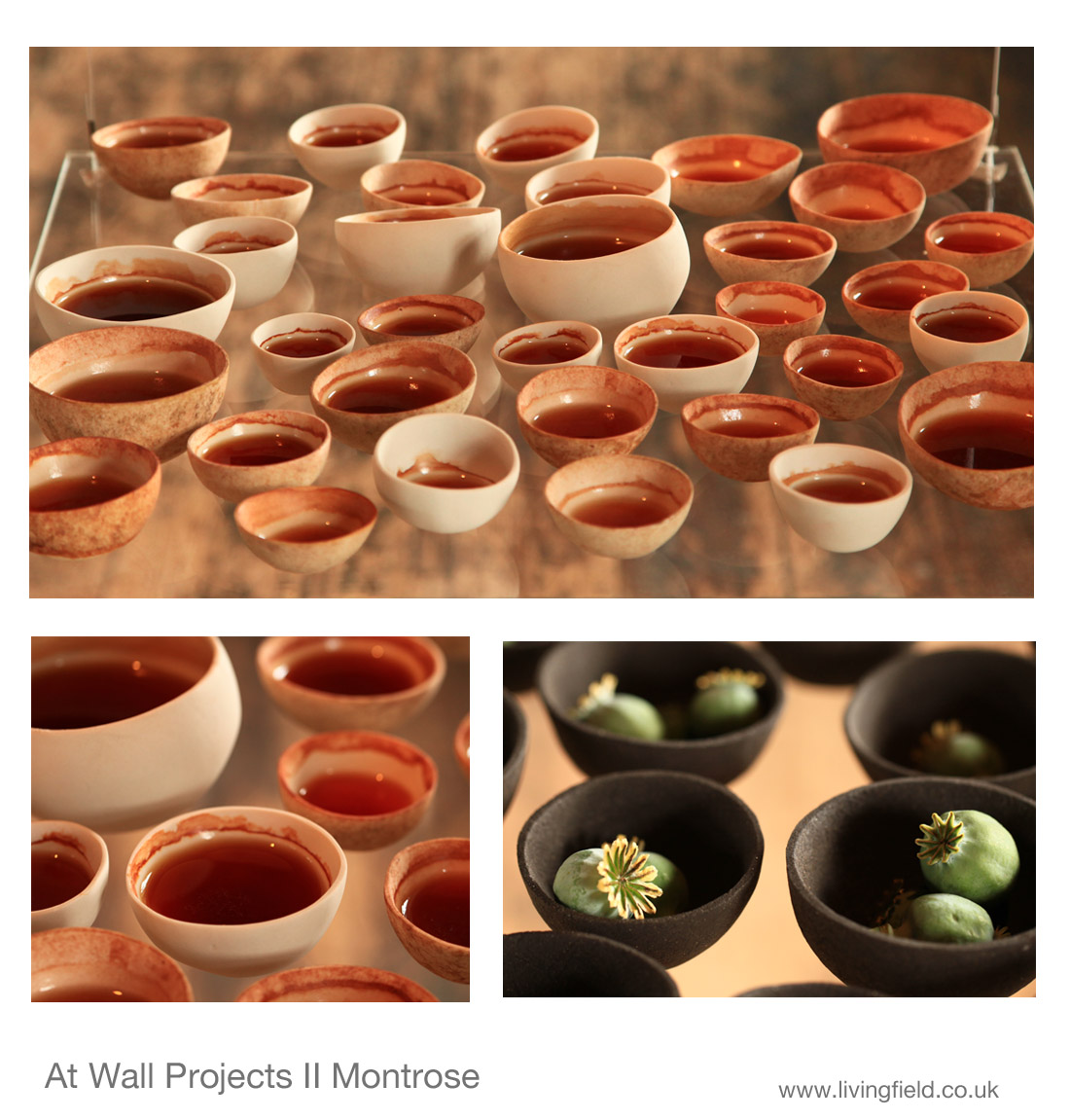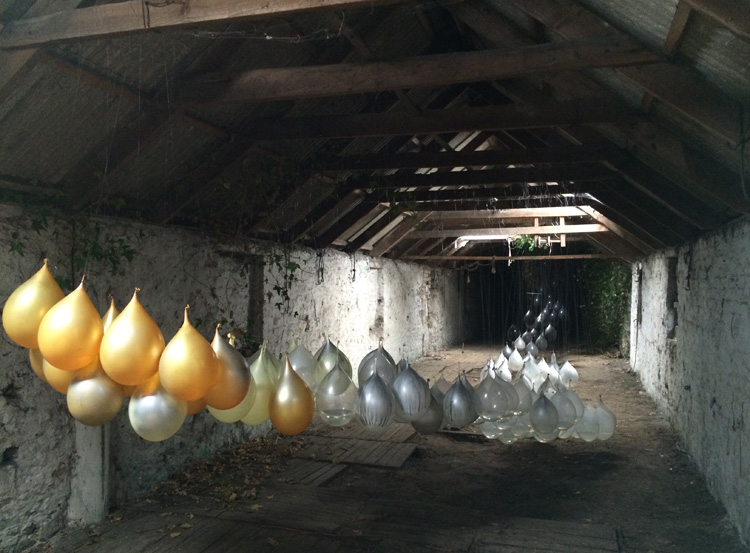Throughout August, wet ditches and banks and boggy corners are filled with wild plants in flower and host to many types of insect.
Many of these plants have at some time or another been used in medicinal preparations – meadowsweet Filipendula ulmaria for fevers, and with willow the source of precursors of aspirin, valerian Valeriana officinalis as sedative, wild angelica Angelica sylvestris as condiment and cure-all, sneezewort Achillea ptarmica to clear a blocked nose, hemp-agrimony Eupatorium cannabinum for ‘catarrhs and coughs’ and yellow iris Iris pseudacorus whose uses are so wide-ranging that one alone can’t be mentioned.
Hardly valued now, they still offer rich findings to those who wish to explore our botanical heritage.
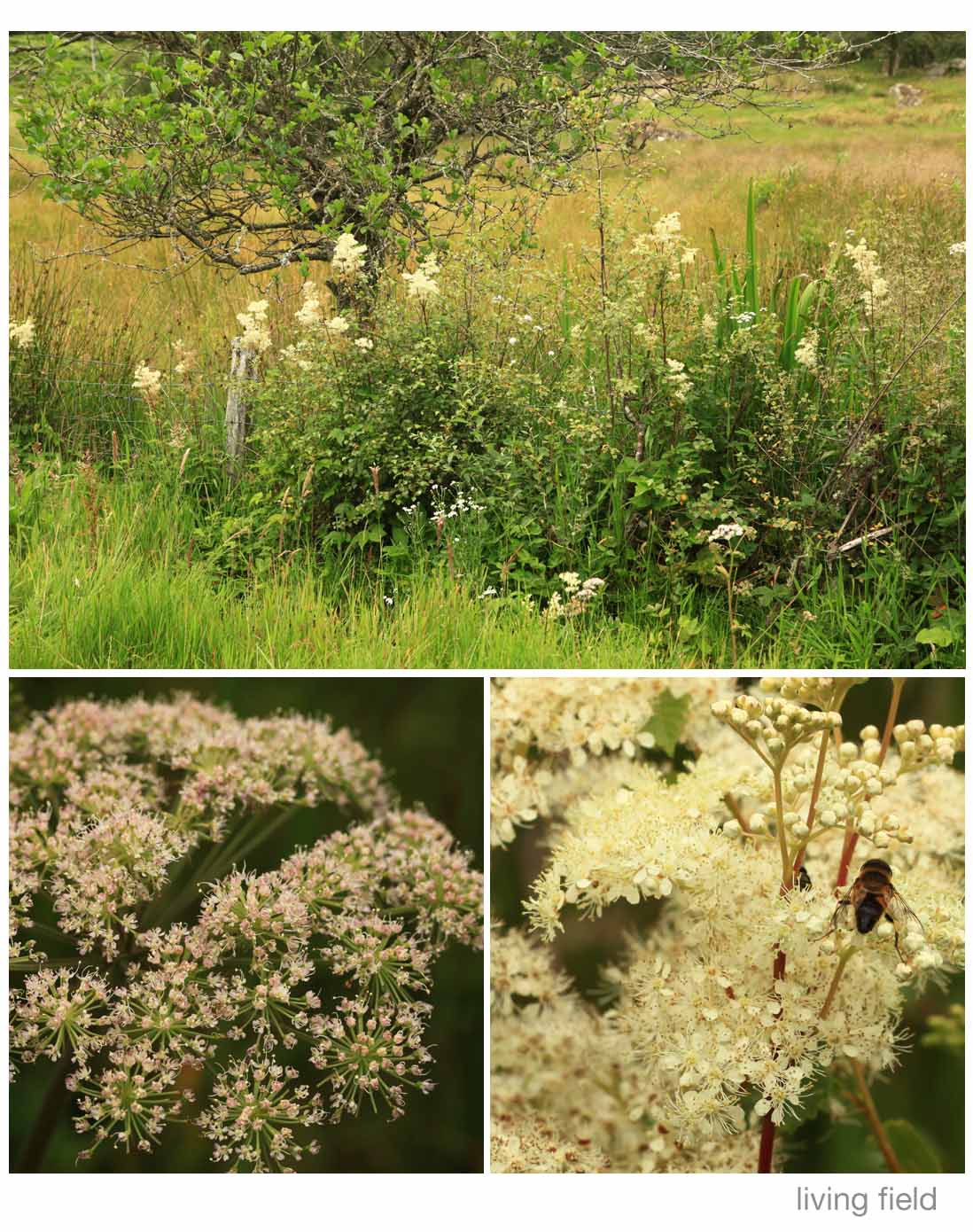
The roadside bank and ditch above, in Strathnairn, holds, within a three metre length, all the herbs mentioned here except hemp-agrimony. Sneezewort is growing at the front on drier ground. Lower images, floral branches of meadowsweet (right) and angelica, each home to many insects.
These plants thrive where the surrounding vegetation is semi-natural or else grazing land having few or no inputs of mineral fertiliser.
Elsewhere, the runoff from well-fertilised arable or grass encourages aggressive and dominant weeds – willow herb, thistles, nettle, docks and the sprawling cleavers – that soon oust the more delicate and slower growing.
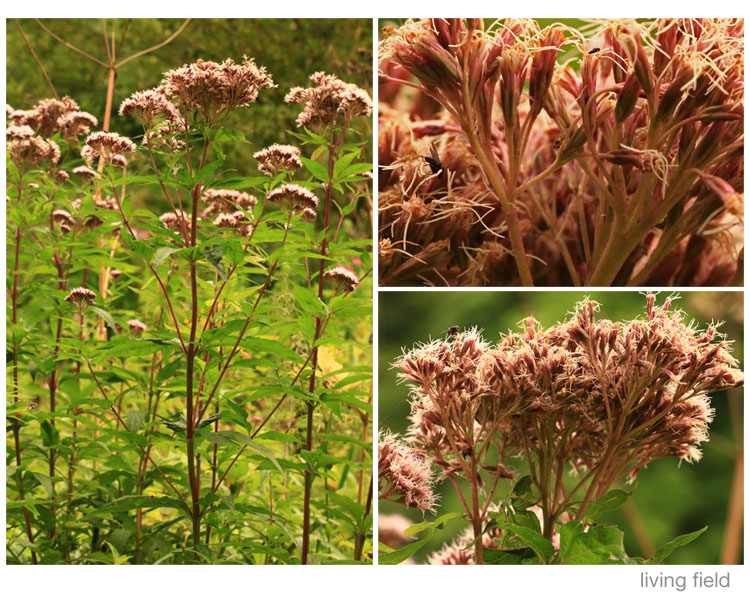
The Living Field garden grows all the medicinal plants mentioned here, but for garden angelica rather than wild angelica.
Sources for medicinal uses: Grigson G 1958, 1975 An Englishman’s Flora. Darwin T 1996, 2008 The Scots Herbal. Plants for a Future www.pfaf.org
[Live on 16 September 2015]

